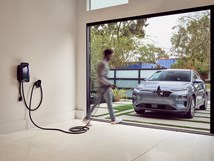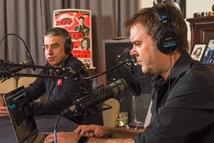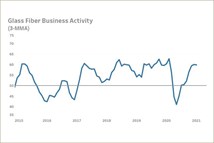Velodyne Passes 30,000 Lidar Systems
Velodyne’s founder and CEO David Hall is credited with inventing, in 2005, real-time, surround-view lidar.
#electronics
Velodyne’s founder and CEO David Hall is credited with inventing, in 2005, real-time, surround-view lidar. Lidar (from “light detection and ranging”) is an instrumental sensor for advanced driver assistance systems (ADAS), as well as for automated driving systems.
.jpg)
Alpha Puck lidar unit
(Image: Velodyne)
Velodyne has developed a number of lidar systems of varying capabilities (directional and surround-view, with differing sensing ranges) and price points—the Puck, Ultra Puck, Alpha Puck, VelaDome, Velarray—and it produces products in a 200,000-square-foot factory in San Jose, California.
Velodyne has announced that it has shipped a cumulative total of 30,000 lidar sensors that represent a total value of $500,000,000. About this accomplishment, Hall, understandably proud, said, “We broke through this milestone because the Velodyne team develops the smartest, most powerful lidar solutions. Velodyne created the world’s first in-house automated manufacturing processes to produce automotive-grade lidar products at scale.”
But there is one thing about this accomplishment which goes to a point of why there isn’t a proliferation of lidar systems on mass produced vehicles right now.
Take the 30,000 sensors and divide that into the half-billion dollars. That means on the order of $16,667 each.
Obviously, that’s not the real number for these various sensors. But the point is that the technology is still rather expensive vis-à-vis “automotive-grade” equipment.
Presumably with scale—as well as continued technological development—those prices will decrease.
RELATED CONTENT
-
FCA Opens the Door to The Future
FCA introduced a high-tech concept vehicle today, the Chrysler Portal, at the event previously known as the “Consumer Electronics Show,” now simply CES.
-
Lincoln Corsair Takes Flight
“We wanted to create a dramatic, youthful Lincoln with terrific harmony.” And with the Corsair, they’ve accomplished what they set out to do.
-
TRW Multi-Axis Acceleration Sensors Developed
Admittedly, this appears to be nothing more than a plastic molded part with an inserted bolt-shaped metal component.


.jpg;width=70;height=70;mode=crop)






